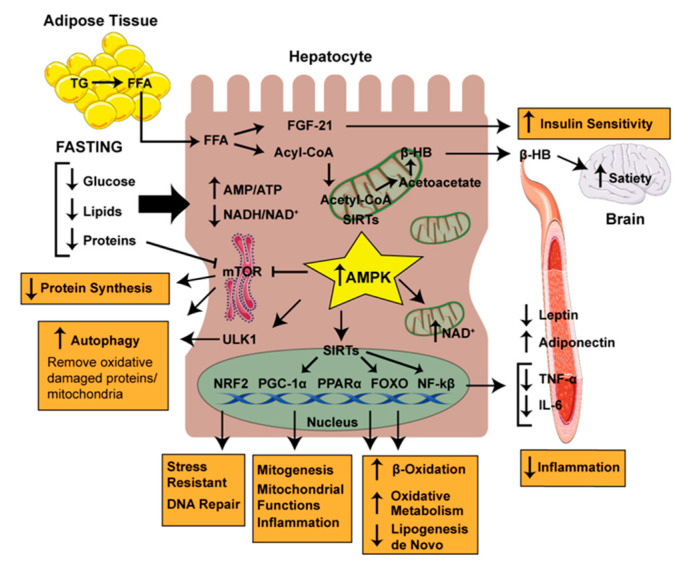Figure 1.
Mechanisms through which fasting might protect against Non-Alcoholic Fatty Liver Disease (NAFLD). Fasting increases lipolysis from adipose tissue releasing free-fatty acids (FFA), which are captured by the hepatocyte. FFA in the hepatocyte stimulates the synthesis of fibroblast growth factor-21 (FGF-21) and alters the ratio of Acetyl-CoA:CoA. Fasting controls the ratios of AMP:ATP and the nicotinamide adenine dinucleotide (NAD+) to NADH. The ratios of these bioenergetic sensors activate AMP kinase (AMPK) and sirtuins (SIRTs). They are main factors in modifications of the transcription factors such as nuclear factor erythroid 2–related factor 2 (NRF2), peroxisome proliferator–activated receptor γ coactivator 1α (PGC-1α), peroxisome proliferator–activated receptor α (PPARα), fork-head box Os (FOXOs) and nuclear factor kappa-B (NF-κβ) (see text). AMPK inhibits mammalian target of rapamycin (mTOR) and activates UNC-51-like kinase-1 (ULK1) resulting in inhibition of protein synthesis and stimulation of autophagy. As a result, fasting favoring stress resistance, mitochondrial biogenesis, and DNA repair decreases lipogenesis de novo, increases β-oxidation and decreases inflammation, all of which support improvements in liver health.

